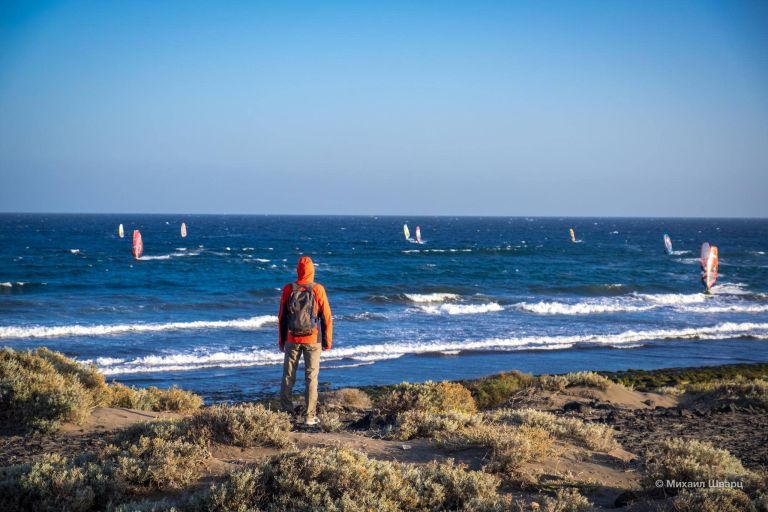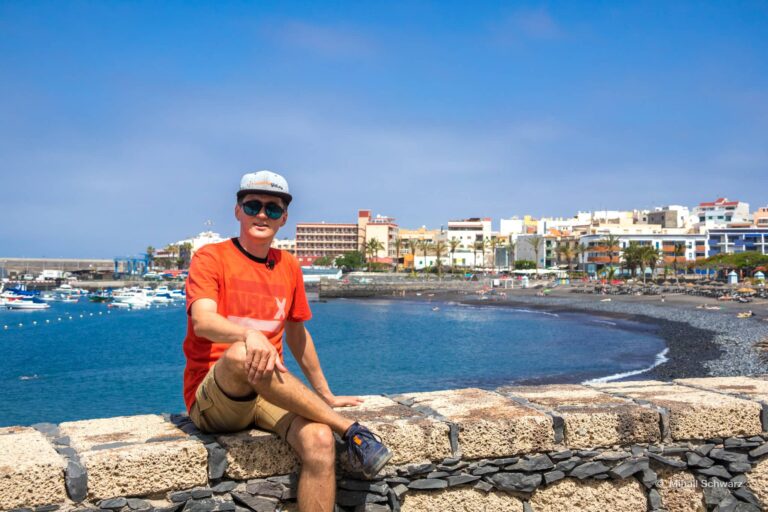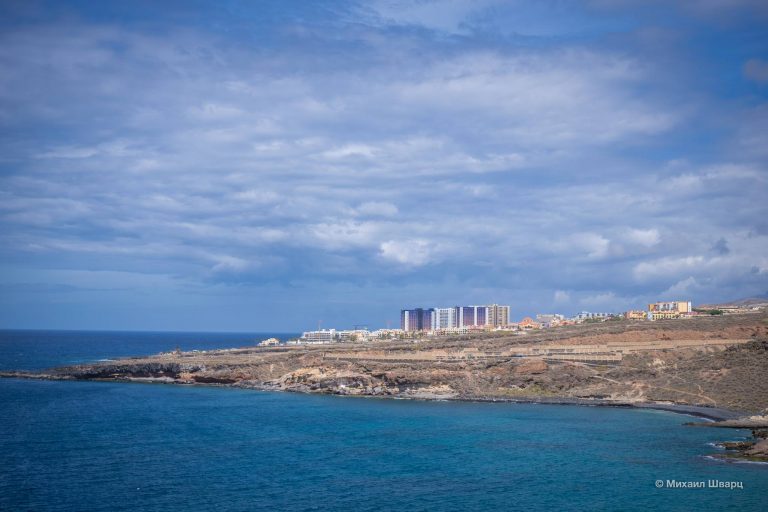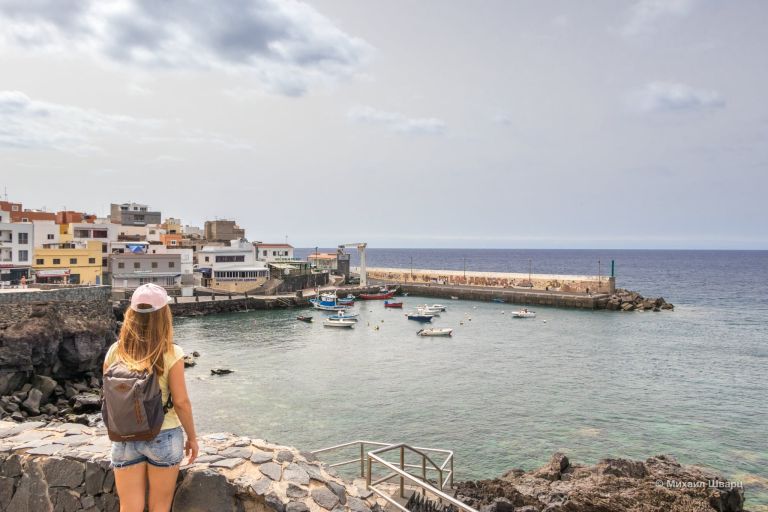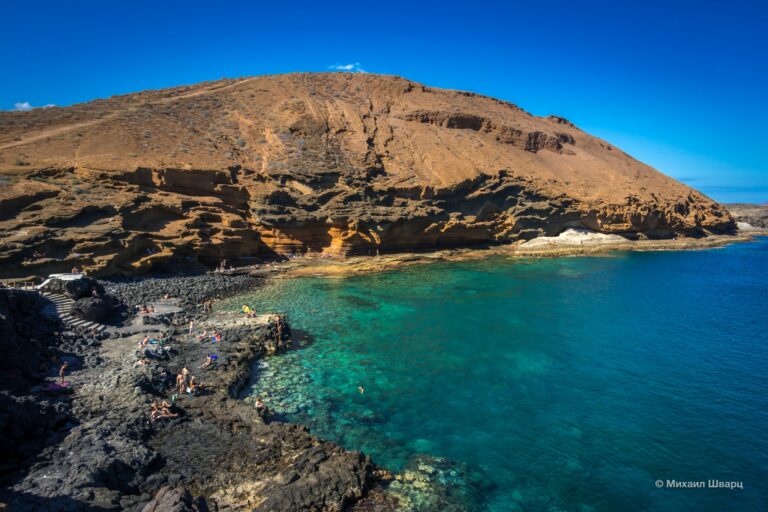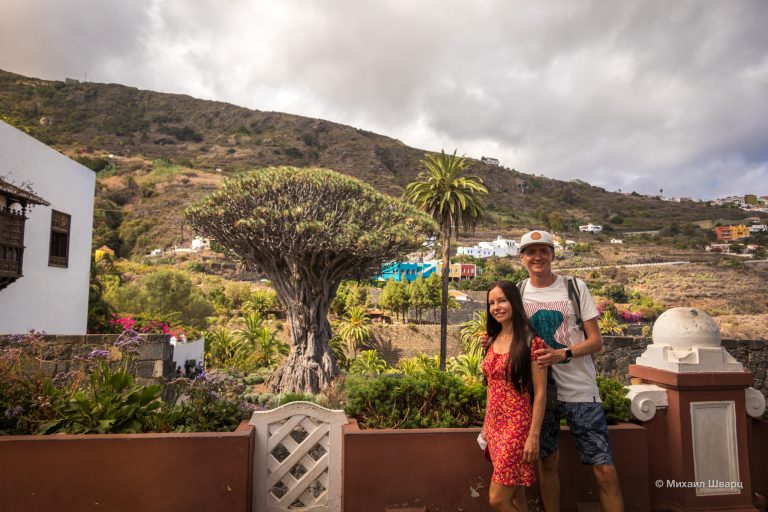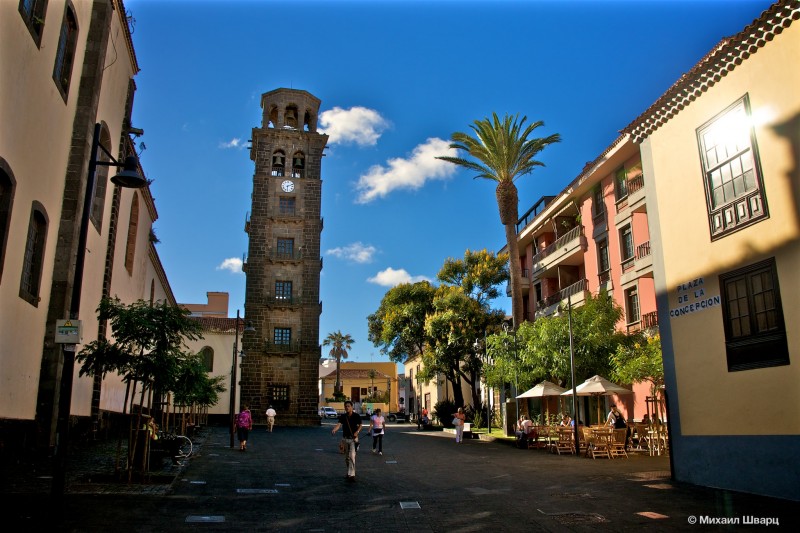
San Cristóbal de La Laguna, or simply La Laguna, is the oldest city in the northeast of Tenerife. It is located near the capital Santa Cruz de Tenerife and is a satellite town of it.
The colonial atmosphere of the historic center has been preserved almost unchanged. The streets of La Laguna have not changed their layout since the 16th century. The houses are painted in pastel colors, adorned with stone porticos, and Canarian balconies can be seen in the inner courtyards.
Since its founding, La Laguna has been considered the religious center of Tenerife. Today, the city is also the spiritual heartland of the province. The bishop’s residence is located here.
La Laguna is a university youth city with several higher education institutions. The University of San Cristóbal de La Laguna is the main one.
In 1999, San Cristóbal de La Laguna was included in the UNESCO World Heritage List as a unique example of a colonial city without fortified walls.
A Little History
The city of La Laguna was founded in 1496. The Spanish conquistador Alonso Fernández de Lugo conquered these lands from the Guanches (the indigenous inhabitants of Tenerife), who had lived here and herded cattle for almost 2000 years. In 1497, the city was granted the status of the capital of the Canary Islands, which it held until 1833.
Toponymy
The place where the city is now located was called the Aguere Valley (Aguere) in the times of the Guanches. It had the shape of a bowl, at the bottom of which condensate and water flowing down from the Anaga Mountains (Macizo de Anaga) accumulated. As a result, a lake formed in the Aguere lowlands. The inhabitants called this place «laguna» (lagoon). Subsequently, the name was transferred to the city of La Laguna.
Later, it was decided to add to the name of the city. On July 25, 1496, the feast day of the martyr Saint Christopher (San Cristóbal), an important event took place – the final victory over the Guanches was achieved. Combining this significant date with the original name of the city, it became San Cristóbal de la Laguna.
When to Visit?
San Cristóbal de La Laguna is located at an altitude of 545 meters above sea level. The climate is classified as oceanic Mediterranean. The city is surrounded by mountains, so clouds often accumulate here, and the humidity becomes high. In winter, temperatures range from 11°C to 18°C, and in summer, from 16°C to 26°C.
Lovers of antiquity and architectural monuments will be comfortable enjoying the colonial atmosphere of the city at any time of the year.
Attractions in La Laguna
San Cristobal de La Laguna Cathedral
Monastery of Saint Catherine of Siena
Monastery of Saint Clare of Assisi
Church of the Immaculate Conception of the Blessed Virgin Mary
Royal Sanctuary of the Christ of La Laguna
Adelantado Square
Salazar House
Alvarado-Bracamonte House
University of La Laguna
Museum of History and Anthropology of Tenerife
Museum of Science and the Cosmos
San Cristobal de La Laguna Cathedral
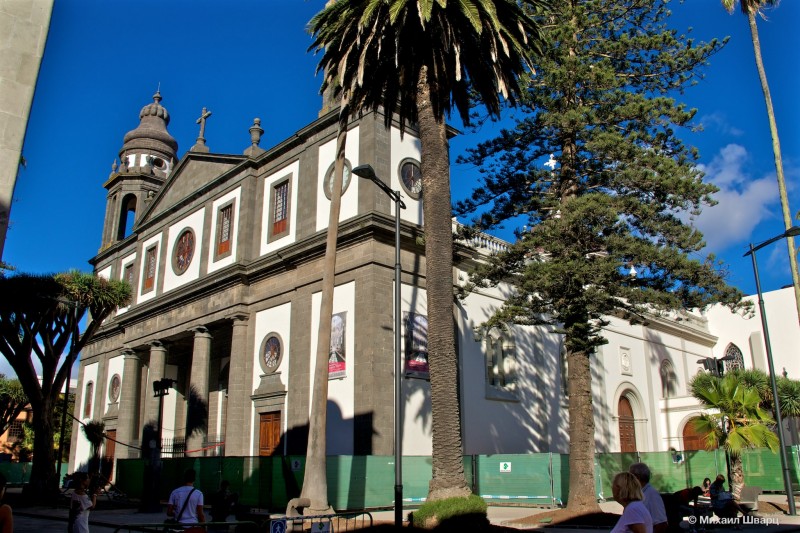
The Catholic Church of San Cristóbal de La Laguna (Catedral de San Cristóbal de La Laguna) is the cathedral of the Diocese of San Cristóbal de La Laguna. In 1511, by order of the conqueror Javier Alonso Fernández de Lugo, a small church was built on the site of the hermitage of Santa María. In 1515, it was rebuilt and dedicated to Our Lady of Los Remedios (Santa María de Los Remedios). The present neoclassical façade of natural stone with two towers was acquired by the church in 1820. In the 21st century, the dome and vaults were replaced. They were made of polypropylene fibers. This was the first case in the world where modern technology was used in the construction of a religious building.
Inside the church, there are works of religious art, as well as the relics of several saints and the remains of Alonso Fernández de Lugo, the conqueror of the island of Tenerife and the founder of the city of La Laguna.
Adjacent to the cathedral is the Chapter House (Casas Capitulares), built in the 18th century in the Canarian style. Today, it houses the Museum of Icons (Museo de los Iconos) with the largest collection of Byzantine icons in Spain (160 original works, most of which are about 300 years old).
Monastery of St. Catherine of Siena
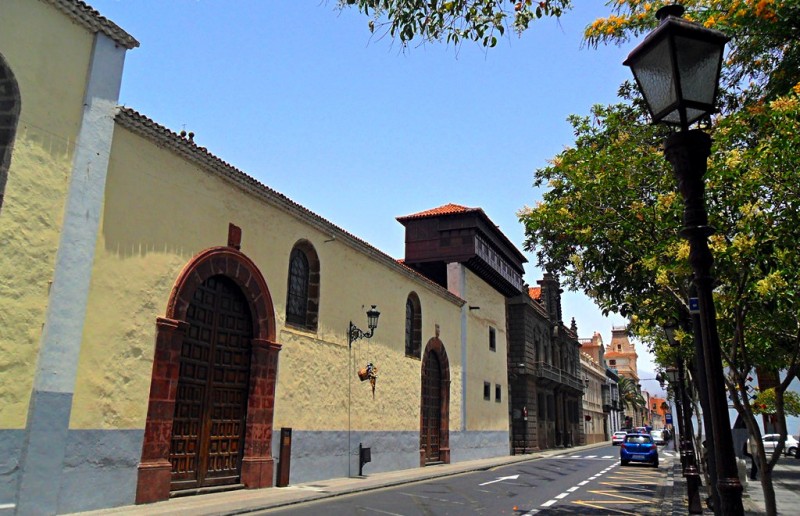
The Monastery of St. Catherine of Siena (Convento de Santa Catalina de Siena) was built in 1611 on the site where the house of Alonso Fernández de Lugo once stood. Santa Catalina is considered the richest monastery in Tenerife. It is home to about 100 Dominican nuns.
The monastery houses the incorrupt relics of the Spanish nun María de León Bello y Delgado. Every year on February 15 (the day of the saint’s death), the relics are displayed for veneration. The Siervita Museum (Museo de la Siervita) operates within the monastery, containing personal belongings and images of María de León.
Monastery of St. Clare of Assisi
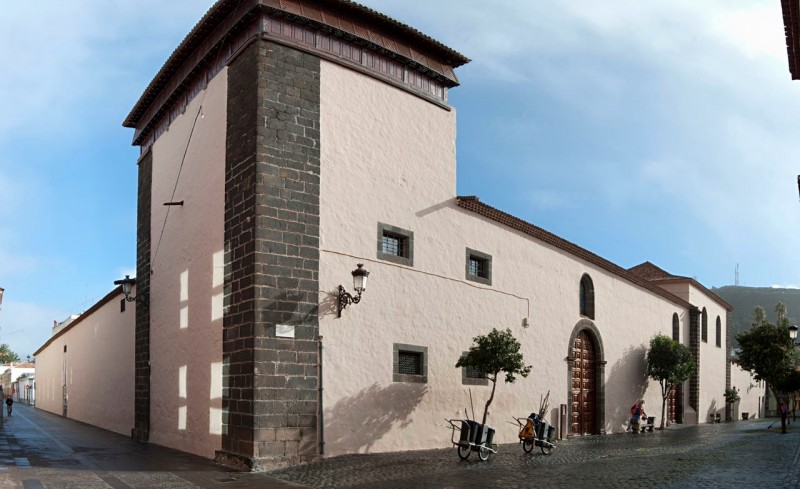
The Franciscan Monastery of St. Clare of Assisi (Convento de Santa Clara de Asís y de San Juan Bautista) was the first female monastery in the Canary Islands. It was founded in 1547 and was initially dedicated to St. John the Baptist. The present building was erected in 1577, but it was rebuilt in the 18th century after a major fire.
The church has a single nave with a gilded coffered ceiling, in the center of which is a sculptural relief depicting St. Francis of Assisi and St. Clare of Assisi. A museum (Museo de Santa Clara de Asís) is open within the monastery.
Church of the Immaculate Conception of the Blessed Virgin Mary
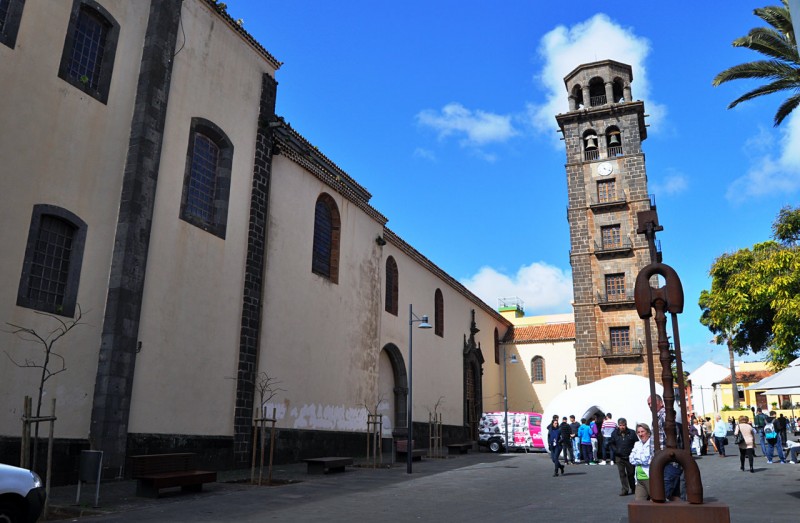
The Church of the Immaculate Conception of the Blessed Virgin Mary (Parroquia Matriz de Nuestra Señora de la Concepción), or simply the Church of the Immaculate Conception (Iglesia de la Concepción), is one of the first Catholic churches in Tenerife and the main parish church of the city of La Laguna. This is the church where the Guanches were once baptized. The Iglesia de la Concepción was built in 1511, but an earthquake destroyed it. In 1778, the building was rebuilt in the Canarian Baroque style. The 28-meter tower with a bell tower, built in the Tuscan style, became a symbol of the city. It is possible to climb the tower.
At the entrance to the church, there is a bronze monument to Pope John Paul II, created by a Polish sculptor.
Royal Sanctuary of the Cristo de La Laguna
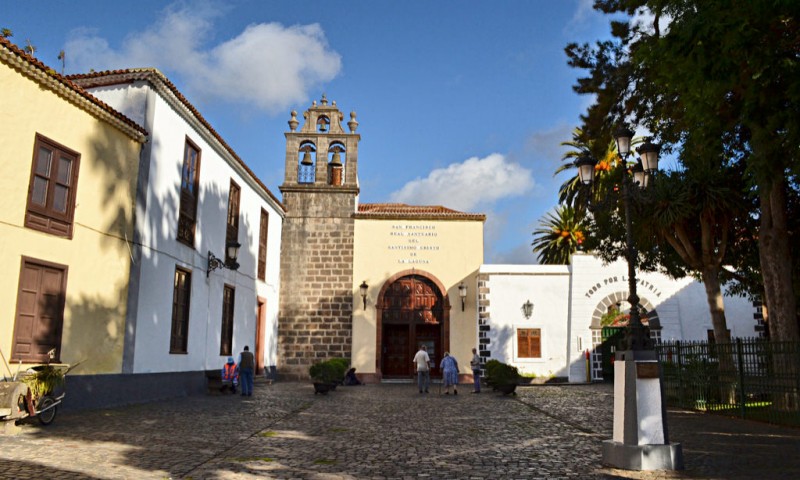
The Royal Sanctuary of the Cristo de La Laguna (Real Santuario de Santísimo Cristo de La Laguna) is a Catholic church that is part of the Franciscan Monastery of San Miguel de las Victorias (Convento Franciscano de San Miguel de las Victorias). Its construction took place from 1506 to 1580. After a fire in 1810, the building was rebuilt.
The Church of Cristo de La Laguna is a place of pilgrimage. It houses the local shrine – the miraculous crucifix of Cristo de La Laguna from the 16th century. Every year on September 9, the crucifix is transferred to the Cathedral, and on September 14, it is returned.
Adelantado Square
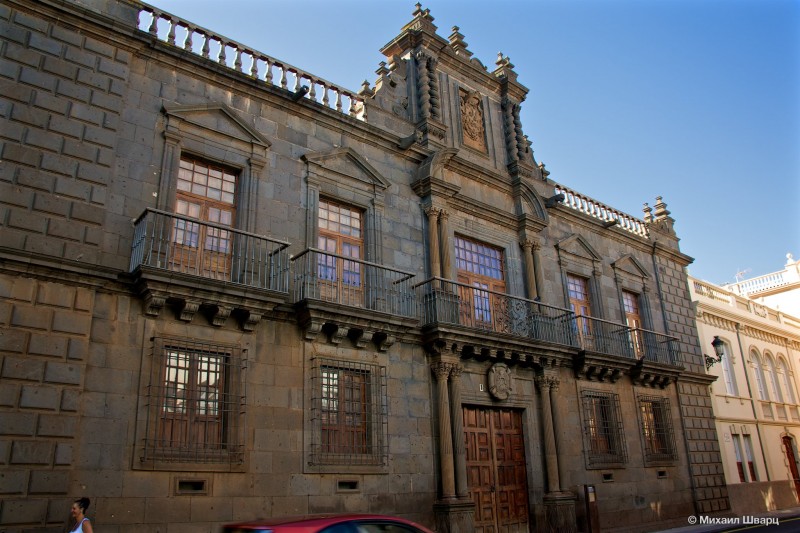
Adelantado (Plaza del Adelantado) is the main square of the old town. It is named after Alonso Fernández de Lugo, who was given the title of adelantado (pioneer).
The central part of the square is decorated with a marble fountain. Around it are administrative buildings, the city hall, the Monastery of St. Catherine of Siena, the Hermitage of San Miguel Arcángel, the courts, and a market. Here stands the Palacio de Nava (Nava Palace). It was once considered the center of public life in the city, and today they plan to turn it into a parador hotel. Next to it is another 19th-century palace that was once a gambling house. Today it is still called the «Casino La Laguna», although it now serves for ceremonial events.
Plaza Adelantado is green: flowers, palm trees, and laurel trees have been planted. You can rest on stone and wooden benches.
Casa Salazar
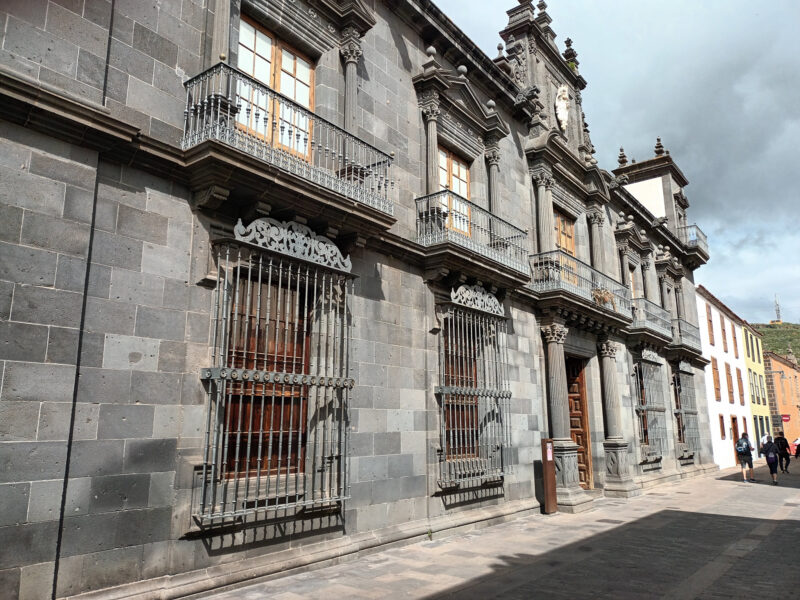
Casa Salazar is a baroque palace, a typical example of Canarian architecture, combining elements of Mannerism and Neoclassicism. The building was constructed between 1629 and 1687 for the Salazar family. In 1891, the house-palace was bought by Bishop Ramón Torrijos y Gómez and turned into the residence of the diocese.
The outstanding element of Casa Salazar is the Episcopal Chapel, the result of the work of an international and ecumenical group led by the Slovenian Jesuit Marco Iván Rupnik. The chapel was opened in 2010. The central mosaic depicts the mystery of Pentecost in the Byzantine style. The Episcopal Chapel is considered a pearl of contemporary religious art in the Canary Islands.
Casa Alvarado Bracamonte
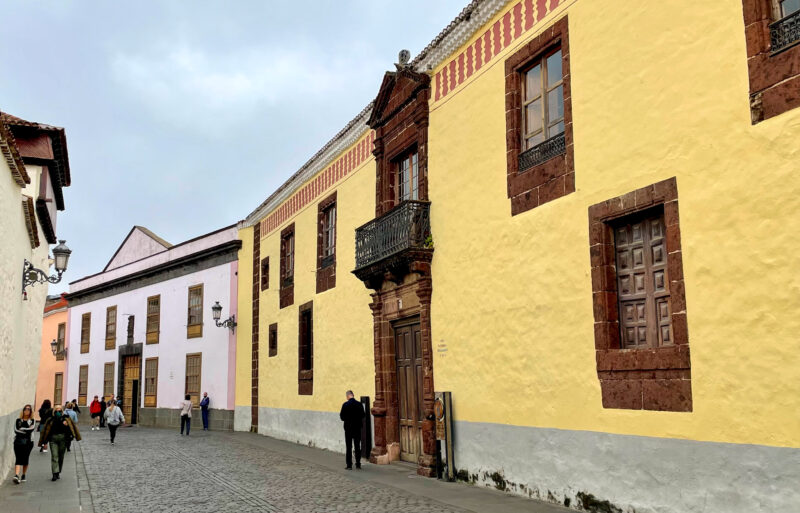
Casa Alvarado Bracamonte was built in 1624-1631 for the family of Diego de Alvarado Bracamonte, who was the governor, judge, and military captain of the islands of Tenerife and La Palma. Later, the building became the residence of the captains-general of the Canary Islands. Therefore, locals more often call it the House of the Captains-General (Casa de Los Capitanes Generales).
The facade of the house is decorated with red volcanic tuff. The interior is decorated in the Canarian style. In the middle of the inner courtyard, there is a fountain, and wooden balconies open onto it. Today, Casa Alvarado Bracamonte houses a tourist center.
University of La Laguna
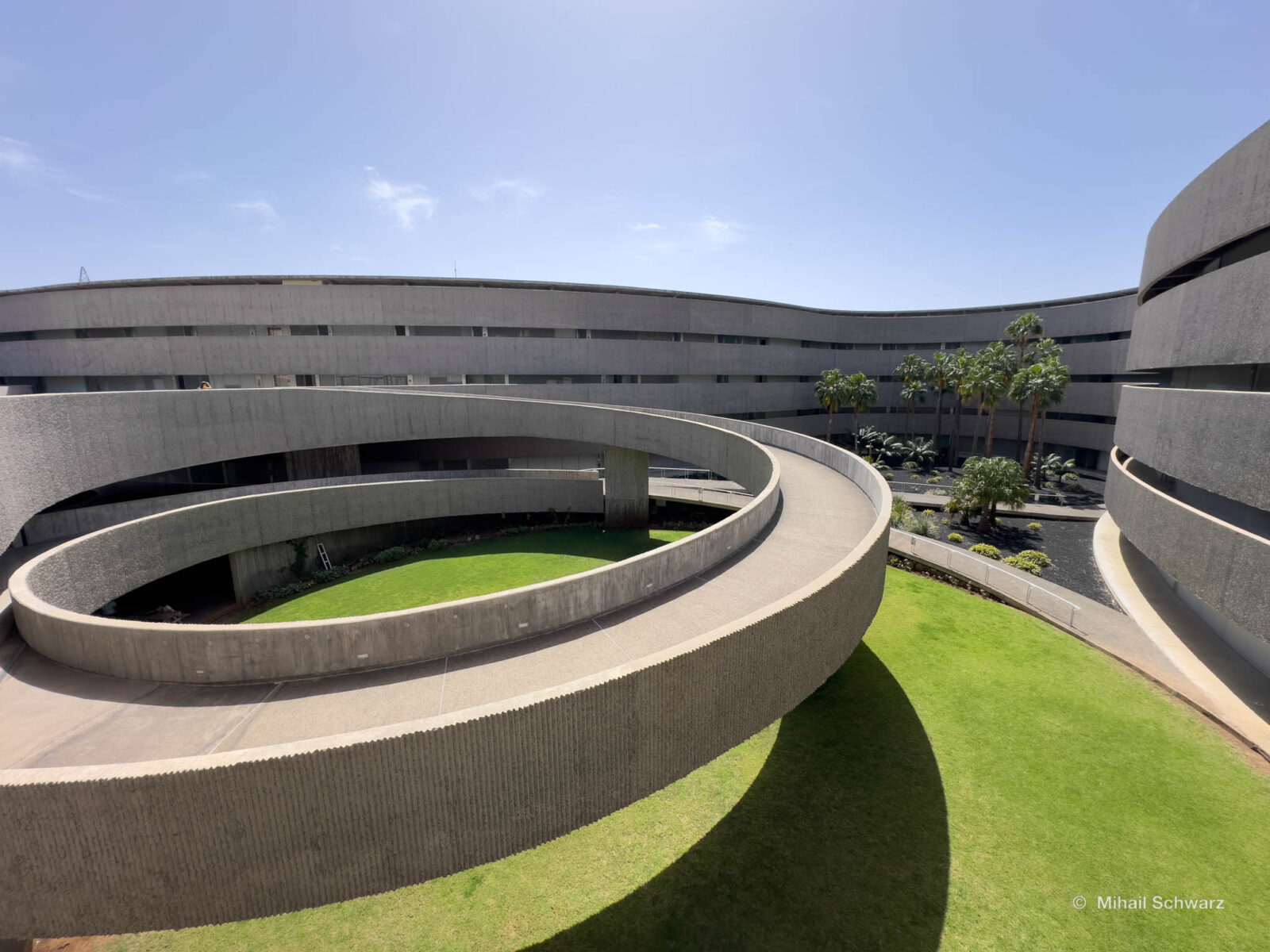
La Laguna is home to the oldest and most prestigious university in the Canary Islands (Universidad de La Laguna, ULL). It was founded in 1701 by Augustinian monks as a spiritual educational center. Currently, around 30,000 students from different countries study there.
Museum of the History of Tenerife
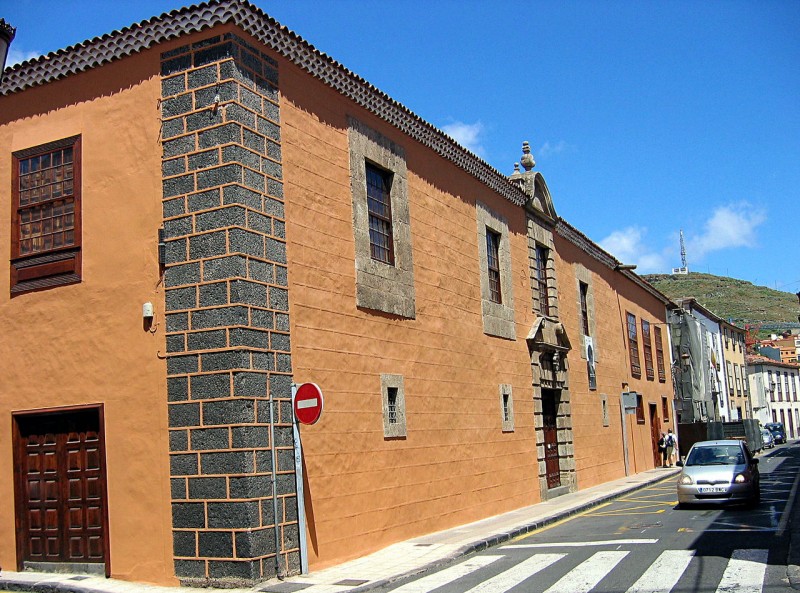
The Museum of History and Anthropology of Tenerife (Museo de Historia de Tenerife) is located in the Renaissance 16th-century Palacio de Lercado mansion. Its exhibition tells the story of the island’s life from the time of Spanish colonization to the 20th century.
The mansion previously belonged to the wealthy Lercaro family. The owner’s daughter committed suicide out of unrequited love, drowning herself in a well. She was buried in the courtyard. There is a legend that her spirit still wanders the house.
Museum of Science and Cosmos
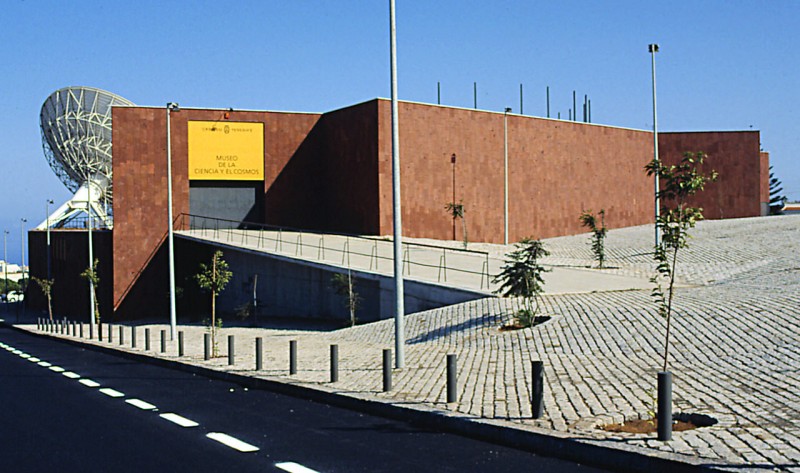
With the participation of the Institute of Astrophysics, the Museum of Science and Cosmos (Museo de la Ciencia y el Cosmos) was opened in 1993. In the museum, you can not only learn about the secrets of the Universe but also participate in fascinating experiments.
Where to Stay in La Laguna
- In the historic center — La Laguna Gran Hotel ****
- At a hotel with a spa — Laguna Nivaria Hotel & Spa ****
- Closer to nature: in rural guesthouses, apartments, or country houses (finca).
Where and What to Eat?
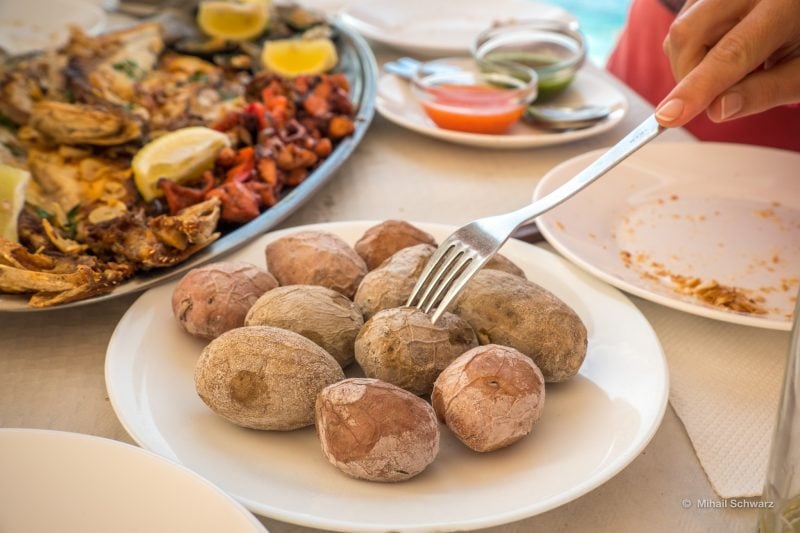
In the city’s restaurants, you should try local dishes such as rabbit in salmorejo sauce (conejo al salmorejo), pork and beef stew (puchero canario), soup with pork ribs and corn (potaje), fried pork or lamb chops (chuletas), Canarian-style potatoes (papas arrugadas) with mojo sauces, Arico goat cheese (Queso Arico), baked sea bass (sancocho canario), flour and sugar rolls with white wine and lemon zest (rosquetes laguneros), gofio (roasted wheat flour) ice cream, almond, sponge cake, egg, sugar and lemon dessert (bienmesabe), and Canarian coffee (barraquito).
I recommend these restaurants:
Guachinch & Fusión
La Bruma Restaurante
Marisquería Isleño Delgado – seafood restaurant
The Market (Mercado Municipal De La Laguna)
Events, Festivals, and Celebrations
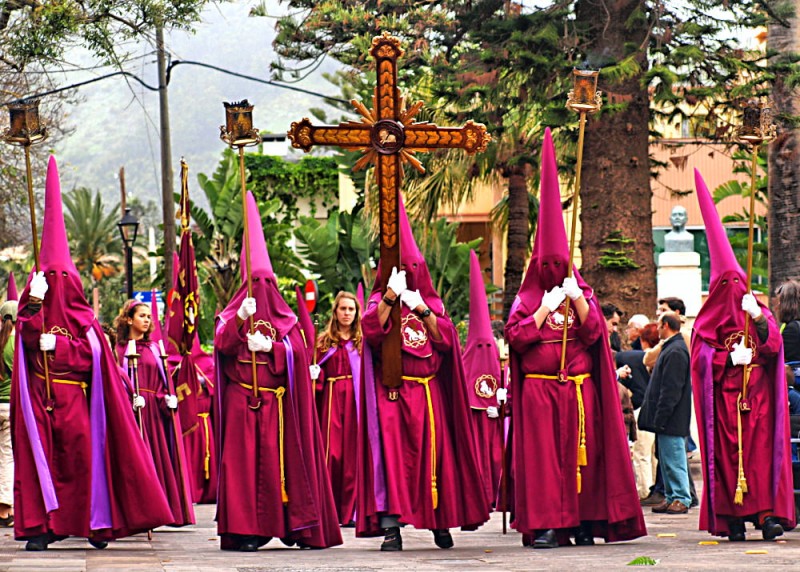
- In February, the traditional carnival takes place (held all over Tenerife).
- During Holy Week, processions of Christian brotherhoods and communities are held. Biblical scenes are reenacted in open spaces. Easter services are held in churches.
- Following an old tradition established in 1847, the Feast of Corpus Christi is celebrated on June 19th. The streets of the city are decorated with vibrant carpets of fresh flowers.
- In July, the city celebrates the national holiday – the Romería de San Benito. The procession with the image of the saint is accompanied by seven women dressed in traditional costumes of the Canary Islands.
- In September, the Sabandeno folk music festival takes place, featuring Canarian groups and international performers.
- September 14th is the City Day.
- On December 2nd, the old town of San Cristóbal de La Laguna was recognized as a World Heritage Site. This date is widely celebrated with various concerts, exhibitions, and performances.
- Christmas days are considered strictly family holidays. Citizens organize lavish feasts. On Christmas Eve, after dinner, people go to attend the midnight mass.
Around La Laguna
The most notable natural attraction near the city is the Macizo de Anaga mountain range. Here, terraces created by the Guanches and old farms, many of which have been converted into private guesthouses, have been preserved. Hiking trails and viewpoints, such as Mirador de La Cruz del, have been set up in the mountains.
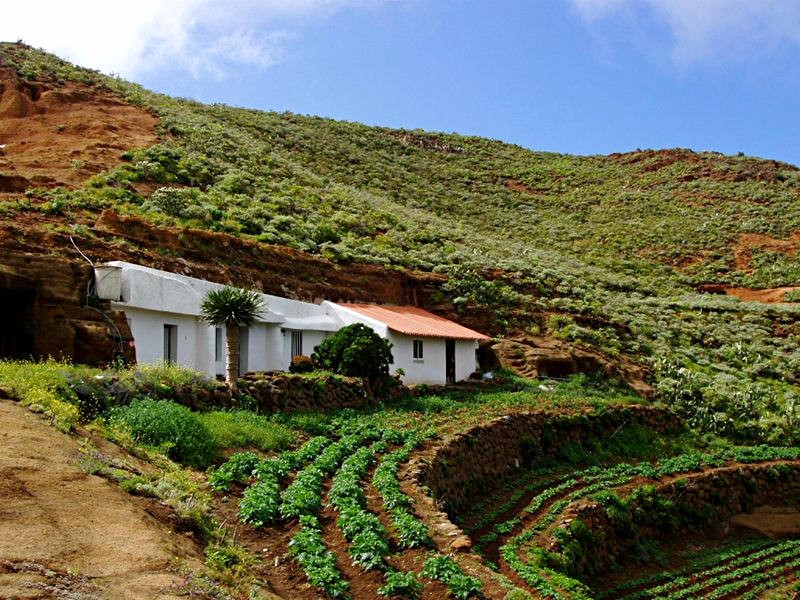
The small village of Chamorga is considered the center of tourist hiking routes. Dozens of trails radiate from it: to the Roque Bermejo rocks, to the terraced Cabeza del Tejo valley, to the village of El Draguillo with its dragon tree groves, to the Faro de Anaga lighthouse, and to the Chinamada caves.
A few kilometers from La Laguna are the cities of Santa Cruz de Tenerife, Puerto de la Cruz, and La Orotava.
The towns of Guamasa, Valle de Guerra, and Tejina are suitable for agricultural and «green» tourism.
Tenerife rum is produced in the cities of Valle de Guerra and Tejina.
How to get to La Laguna?
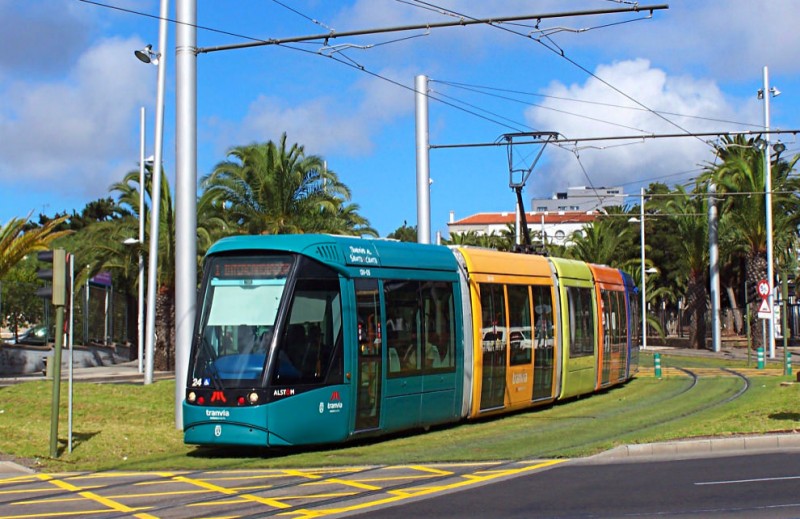
From the island’s capital Santa Cruz de Tenerife, tram L1 runs to San Cristóbal de la Laguna. The schedule, route, and ticket prices can be found on the Metropolitano de Tenerife company website.
The city has a bus station where buses from all over the island arrive.
The Tenerife North Airport is located 5 km from the historic part of the city. The Tenerife South Airport is 60 km away.
- Сан-Кристобаль-де-ла-Лагуна
- San Cristóbal de La Laguna
- Адрес: Tenerife, España
- GPS: 28,4921 -16,3156

